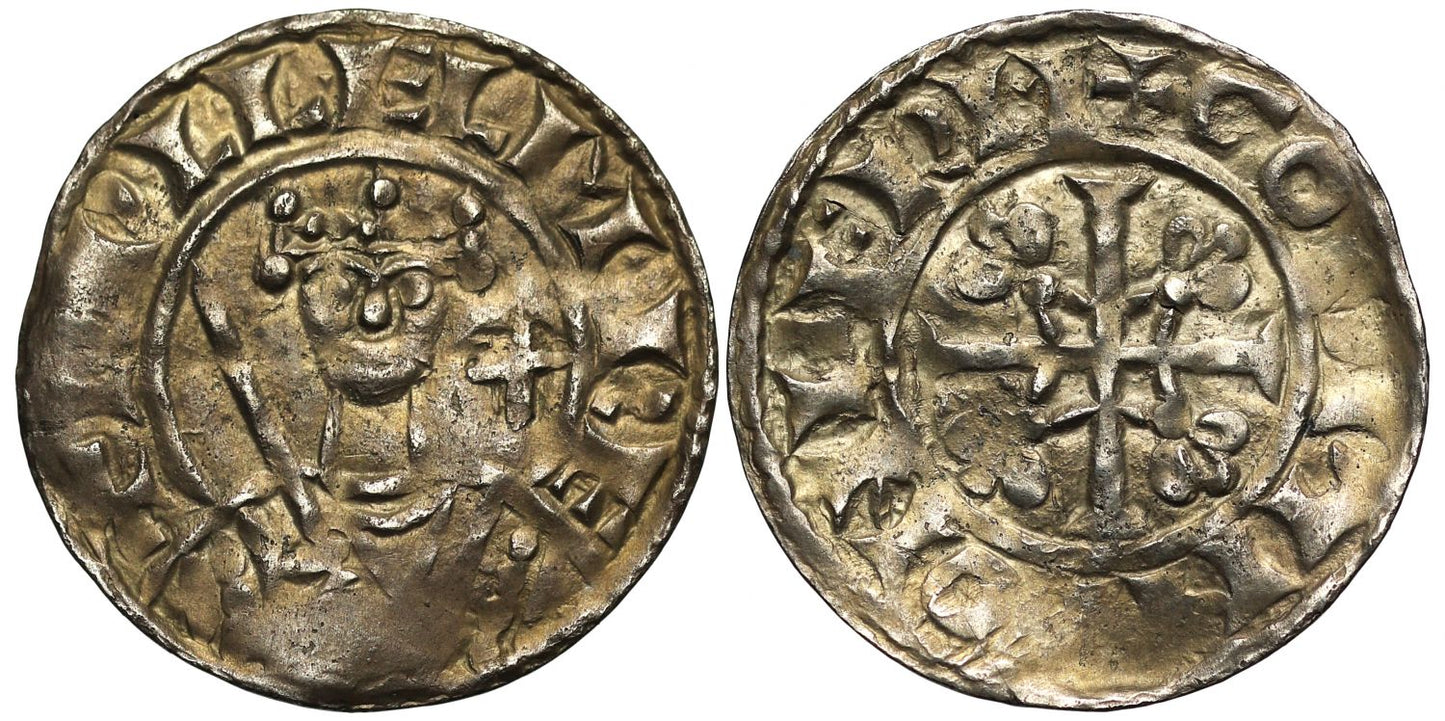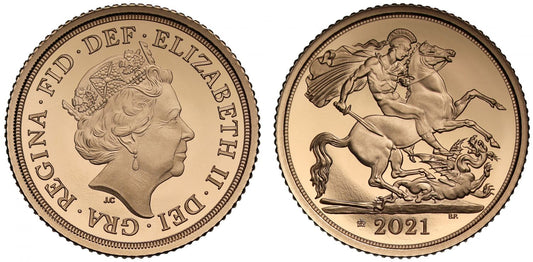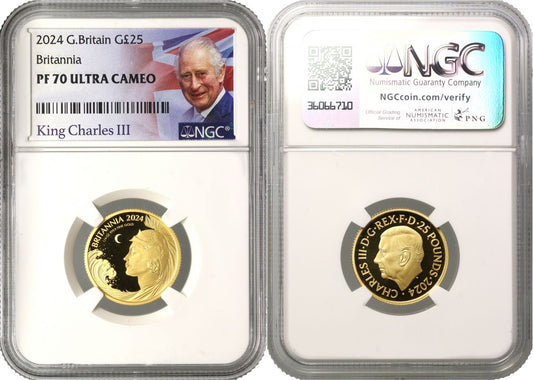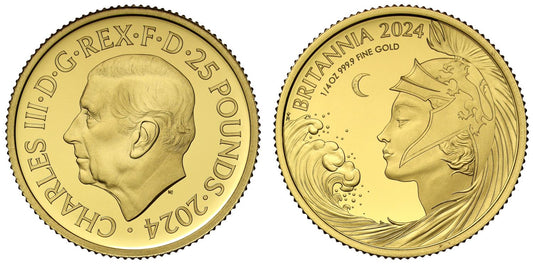FAQs
What makes a coin valuable?
I have coins to sell, what’s the next step?
How will my purchases be shipped?
What happens if I’m not entirely happy with my purchase?
William I Penny, sword type, Wareham Mint, moneyer Godwine with cross over shoulder
William I (1066-87), silver sword type Penny (1077-80?), Wareham Mint, Moneyer Godwine, facing crowned bust to edge of coin with sword resting on shoulder, with cross added to die and appearing above shoulder, legend commencing lower left with inner and outer linear circles surrounding both sides, +PILLELM RE, rev. cross pattée over quadrilateral with incurved sides and fleury angles, +GODPINE ON PERM, weight 1.19g (BMC type VI; SCBI Stockholm 11b:34 same dies; N.846; S.1255). Toned, weakly struck at base of past and on one part of legend, very fine and extremely rare.
The legends translate as "William King of the English" on obverse and on the reverse "Godwine of Wareham."
The cross that has clearly been added to the die locally occurs on this type for the Dorset mints of Wareham, Dorchester and Shaftesbury and perhaps could have some ecclesiastical connotations. Coins of Godwine at this mint are known without the cross too as seen in SCBI Yorkshire 24:769 as well as with the cross as cited in above description. An example of a Dorchester piece of moneyer Oter was sold at St James Auction 22 on 27th September 2018 lot 1034.
Despite the transition from the Anglo-Saxon to the Norman period, numismatically the three-year change of coin types continued. The sword type of William is the sixth of the seven types attributed to this reign. According to North the Shaftesbury Mint had up to 7 moneyers active from type V in the reign of William the Conqueror.
The first Norman King of England, William the Conqueror born around 1028 was the son of Robert I of Normandy and Herleya. A descendant of Rollo, William became Duke of Normandy in 1035, he subsequently married Matilda of Flanders in the 1050s ensuring a powerful ally in that neighbouring region. After a protracted struggle and quashing rebellions, his hold over Normandy was eventually secure by 1060 and with appointment of supporting abbots and bishops in the Norman church, and he subsequently secured the region of Maine in 1062. William's first cousin once removed was the childless Edward the Confessor of England and from this family connection and that Edward had previously told him he would succeed, he assumed a claim to the throne of England over Harold Godwinson, who Edward had named as his successor on his deathbed in January 1066. William also claimed that Harold previously had promised the throne to him in the event of succession, Harold having sworn over holy relics in William's presence as depicted in the Bayeux tapestry. William therefore built up a powerful invasion force to cross the channel and fight for the right to rule England as of September 1066. He landed at Pevensey Bay and after setting up camp with a basic fort at Hastings he marched north to meet Harold at Senlac Hill at Battle, East Sussex on the 14thOctober. A battle raged for most of the day, with at one point a rumour spread that William was slain resulting in him having to remove his helmet and reveal he was alive and fighting, boosting the morale of the Normans for the final onslaught in which Harold perished, either from an arrow in the eye or cut down by a horseman. William then went on a military tour to put down local uprisings leading to his crowning in Westminster Abbey on Christmas Day. He made arrangements in London for governance for whenever he would be in Normandy, and by 1075 his hold on England was almost complete with many forts and castles constructed. His later years involved quelling other uprisings in Europe and difficulty with his eldest son Robert Curthose, but his most famous achievement in England was the preparation of the Domesday Book in 1086; a survey of the land and the land-owners and nobles within it, listing pre-conquest and current holders at that time. William died in September 1087 leading a campaign in northern France and was buried at Caen. Normandy was given to eldest son Robert, with England given to his next surviving son William Rufus.
Situated 15 miles east of Dorchester in between the Rivers Frome and Piddle, Wareham was once a thriving port and is mentioned in the Burghal Hidage. In 875 it was taken by the Danes and later devastated by William I in 1067. It was the stronghold of Robert of Gloucester and surrendered to Stephen in 1138, but revolted in 1139 when Baldwin de Redvers landed, and later recovered by Stephen in 1142 strategically cutting off communication for the Angevin party with the continent. However Robert returned on the way from Normandy and took the harbour and town and eventually recaptured the castle after three weeks of siege. Minting activity occurs first for Aethelstan and then from Edgard to Stephen with various Baronial issues and for Matilda.
Provenance:
Ex Spink Coin Auction, 27th March 2019, lot 950 where it was originally described as Lewes Mint in printed catalogue but corrected for online version and for sale day.
FAQs
What makes a coin valuable?
I have coins to sell, what’s the next step?
How will my purchases be shipped?
What happens if I’m not entirely happy with my purchase?













